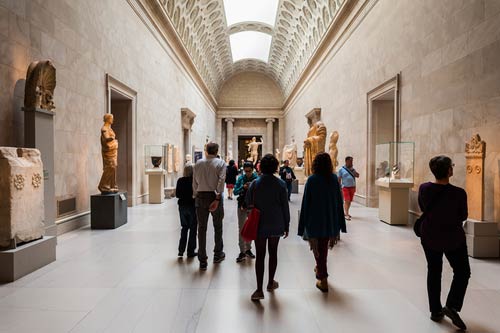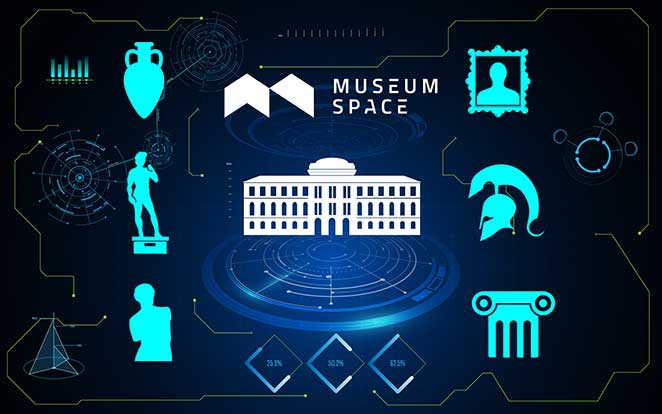
Whenever we talk about a museum, we associate it with history, something old and ancient. We usually picture big halls, galleries and passages, statues, and a feeling that time is frozen. Naturally, when we talk about ancient artifacts, we cannot assume that modern technologies have a place there. Even more, we have some mistrust that technology will spoil the magic of the ancient stories, will take away the charm of our personal inner experience of events when we discover or learn curious and new things about historical facts and events.
Then, we think about, once we live in a digital world and use digital services and channels of communication, we also talk about web-based solutions and all the information is a click away, why do people still like going to museums? Well, the next question might be whether the technology will supersede the amusement of going to a gallery, a library or a museum, or will drift us away from immersing ourselves in the world of art for a couple of hours, completely absorbed in contemplation, admiration and sheer enjoyment of the achievements of human genius.

For myself at least, the answer is easy - technology and art interact, merge and complement in a very pleasant manner.
My personal sensation while visiting a museum is like performing a ritual or observing a tradition. I suppose many of us have such impression when you walk through the front doorway and something strange instantly shakes you, you start to feel respect for the place and desire to look at all the exhibits gathered. Have you ever thought about the tons of efforts that people working in this institution have made? How many years of work were needed to gather up such valuable exhibits organized in expositions? Are we experiencing respect for all those people standing in front of each room and observing the behavior of visitors, all restorers, curators and museum experts? All these people have spent months or years restoring a painting or sculpture so that visitors can relish the beauty of the masterpieces.
I am convinced that technology can actually assist people responsible for all activities related to the exhibits. Imagine a technical solution that collects all museum exhibits in one place - something like a large digital store for exhibits; it enables the organization of all accompanying documents – such as an electronic catalog, and finally – it shows the history of all manipulations and restoration activities performed on a given cultural object – the same like a “personal medical record of the museum exhibit, etc.” Does it sound familiar to you?
A solution that doesn’t merely compile information, but also analyses and classifies it in the most proper and correct way. A solution that applies artificial intelligence algorithms and does not require human intervention to track all movements, lendings, and restoration of a given cultural artifact. A solution which enables museum workers to organize the next exhibition only with a few clicks. A solution which frees us to go paperless in order to provide information to the adjacent department, that takes away our burden of writing long and descriptive reports, which helps us to generate them directly from the system. And then, that is my vision of how technologies can be extremely useful in museum daily activities.

Intelligent software solutions for the complete management of museum activities are already in place. They can support the work of museum staff, and thus people can focus on what they are best at, namely, not to be overwhelmed by administrative burdens and to offer us more interesting experience.
So, instead of spending another hour on the Web or behind the screen, let’s shut the laptop, tablet or the phone, enjoy a cup of tea, or call a good friend and visit your favorite gallery, museum or library.
Author: Elena Bashkehayova, Marketing Manager of Museum Space product of Sirma Solutions

